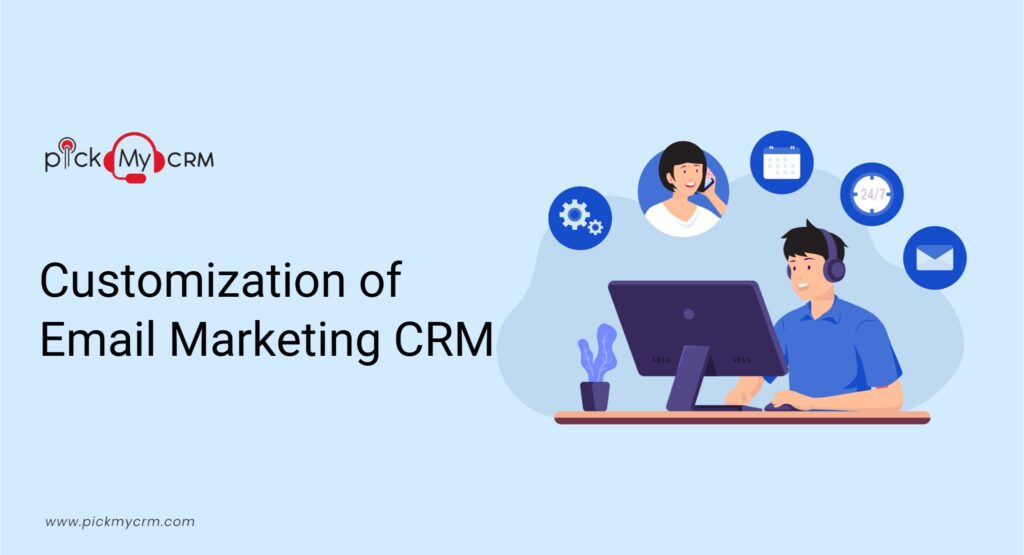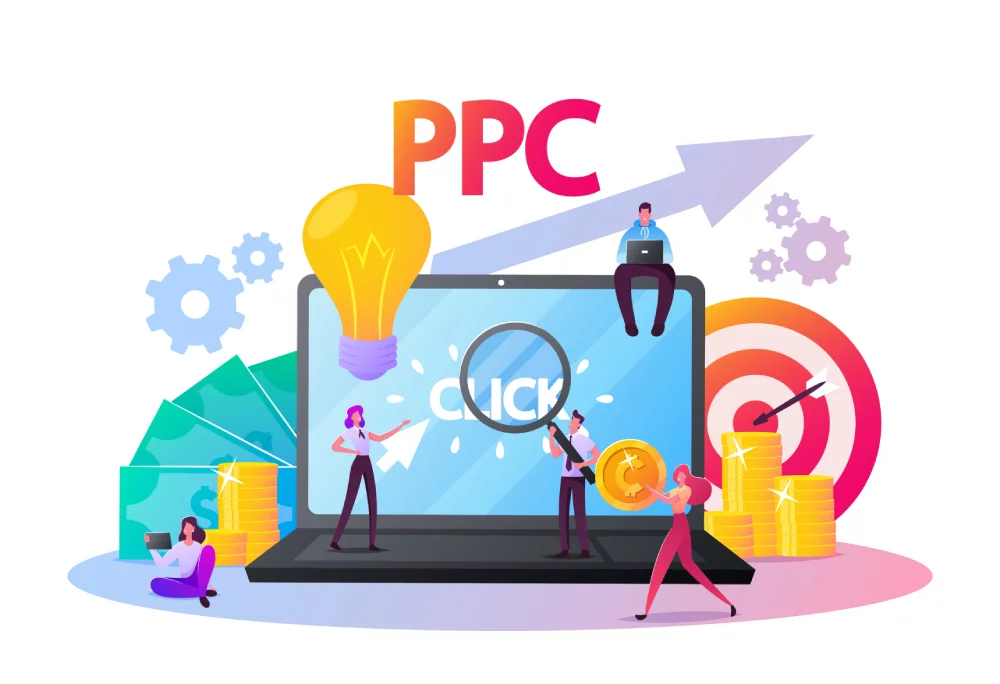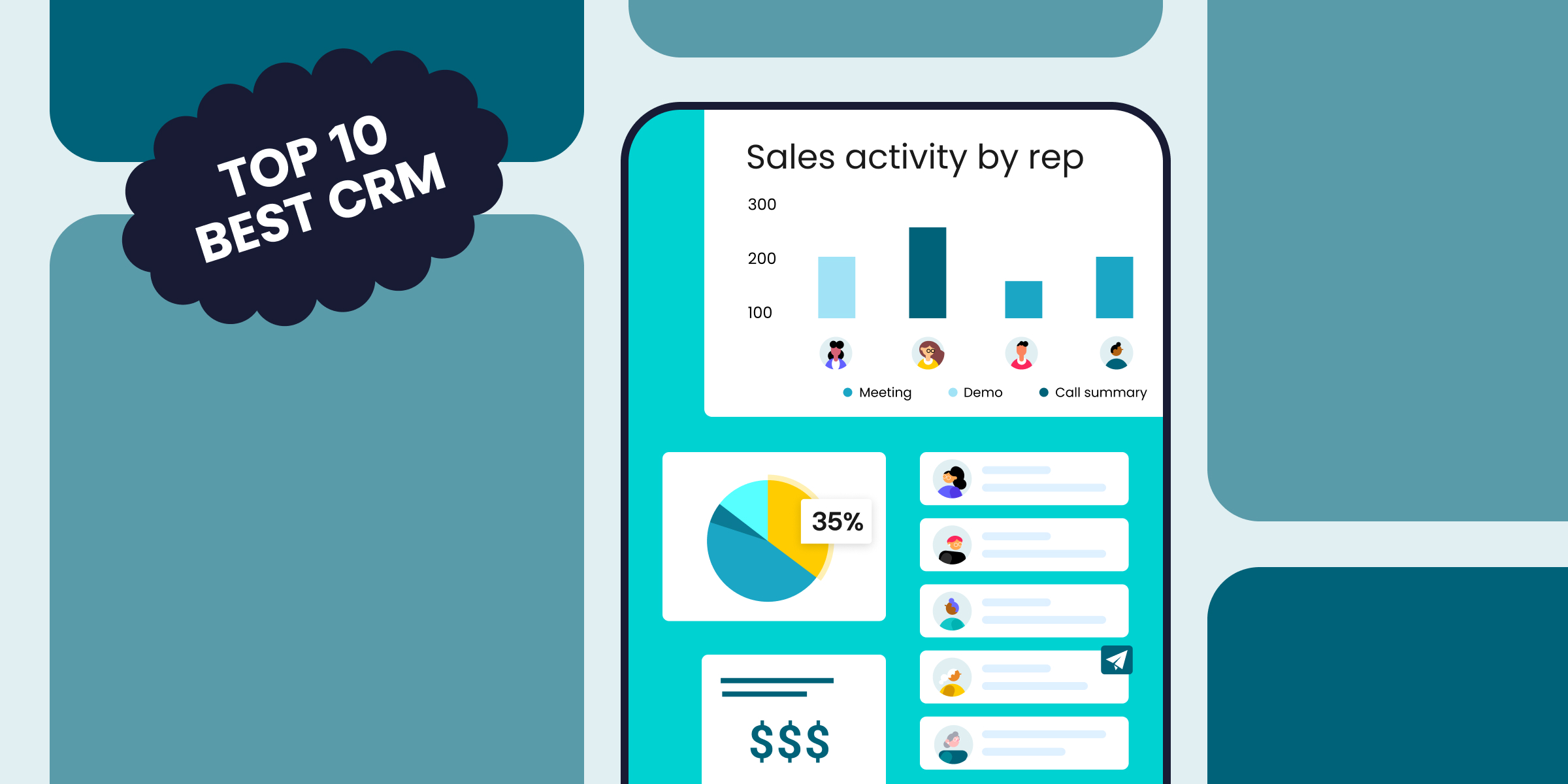CRM Email Marketing: The Ultimate Guide to Boosting Engagement and Revenue

CRM Email Marketing: The Ultimate Guide to Boosting Engagement and Revenue
In today’s digital landscape, email marketing remains a powerhouse for businesses aiming to connect with their audience, nurture leads, and drive conversions. However, simply sending out generic emails is no longer enough. To truly excel, you need a strategic approach that combines the power of Customer Relationship Management (CRM) with the effectiveness of email marketing. This comprehensive guide delves into the world of CRM email marketing, exploring its benefits, strategies, and best practices to help you transform your email campaigns into a revenue-generating engine.
What is CRM Email Marketing?
CRM email marketing is the practice of using a CRM system to manage and optimize your email marketing efforts. It involves leveraging the customer data stored in your CRM to personalize and target your email campaigns, ultimately leading to higher engagement rates, improved customer relationships, and increased sales.
At its core, CRM email marketing combines the functionalities of a CRM system with the reach of email marketing. A CRM system acts as a central hub for all your customer data, including contact information, purchase history, website activity, and communication logs. This data is then used to segment your audience, personalize your emails, and tailor your messaging to resonate with individual customer needs and preferences.
The Benefits of CRM Email Marketing
Integrating CRM with your email marketing strategy offers a multitude of benefits for your business. Here are some of the key advantages:
- Enhanced Personalization: CRM data allows you to personalize your email content, subject lines, and calls-to-action based on individual customer preferences, behavior, and demographics. This level of personalization significantly increases engagement and click-through rates.
- Improved Segmentation: With CRM, you can segment your audience into highly targeted groups based on various criteria, such as purchase history, website activity, or lead source. This allows you to send relevant emails to the right people at the right time.
- Increased Engagement: Personalized and targeted emails are far more likely to resonate with your audience than generic, mass-sent messages. This leads to higher open rates, click-through rates, and overall engagement.
- Better Customer Relationships: By understanding your customers better, you can build stronger relationships and foster loyalty. CRM email marketing allows you to communicate with your customers in a more meaningful and personalized way.
- Higher Conversion Rates: Personalized emails that address specific customer needs and interests are more likely to drive conversions. CRM email marketing helps you guide your leads through the sales funnel and convert them into paying customers.
- Improved ROI: By optimizing your email campaigns and targeting the right audience, you can significantly improve your return on investment (ROI). CRM email marketing helps you make the most of your email marketing budget.
- Streamlined Workflow: CRM systems automate many of the manual tasks associated with email marketing, such as segmentation, personalization, and sending. This saves you time and resources, allowing you to focus on other important aspects of your business.
- Data-Driven Insights: CRM systems provide valuable data and analytics that help you track the performance of your email campaigns and identify areas for improvement. This allows you to make data-driven decisions and optimize your strategy for maximum impact.
Key Components of a CRM Email Marketing Strategy
To build a successful CRM email marketing strategy, you need to consider several key components:
1. Data Integration
The foundation of any successful CRM email marketing strategy is seamless data integration. This involves connecting your CRM system with your email marketing platform to ensure that customer data is synchronized and accessible. This integration allows you to:
- Import and Export Data: Easily transfer customer data between your CRM and email marketing platform.
- Sync Contact Information: Keep customer contact information up-to-date across both systems.
- Track Customer Behavior: Monitor customer interactions with your emails and website.
- Personalize Email Content: Use customer data to personalize email content and subject lines.
The integration process usually involves using APIs (Application Programming Interfaces) or pre-built integrations offered by your CRM and email marketing platforms. Ensure that your integration is secure and complies with data privacy regulations.
2. Audience Segmentation
Audience segmentation is the process of dividing your customer base into smaller, more targeted groups based on shared characteristics. This allows you to send more relevant and personalized emails to each segment, leading to higher engagement and conversion rates.
Here are some common segmentation criteria:
- Demographics: Age, gender, location, income, education.
- Behavior: Website activity, purchase history, email engagement, product interests.
- Lead Source: How the customer entered your sales funnel (e.g., website form, social media, event).
- Purchase History: Recent purchases, product categories purchased, average order value.
- Customer Lifecycle Stage: Lead, prospect, customer, loyal customer, churned customer.
When segmenting your audience, it’s essential to define clear goals for each segment. What do you want to achieve with this segment? What kind of messaging will resonate with them? Once you’ve defined your segments and goals, you can create targeted email campaigns.
3. Email Personalization
Personalization is the key to making your emails stand out in a crowded inbox. By using customer data from your CRM, you can tailor your emails to each recipient’s individual needs and preferences.
Here are some ways to personalize your emails:
- Personalized Subject Lines: Use the recipient’s name, mention a recent purchase, or highlight a relevant product.
- Dynamic Content: Include personalized recommendations, product suggestions, or special offers based on the recipient’s interests and behavior.
- Personalized Greetings: Address the recipient by name and use a tone that reflects your relationship with them.
- Behavior-Based Triggers: Send automated emails based on specific customer actions, such as website visits, abandoned carts, or purchase confirmations.
The more personalized your emails, the more likely they are to resonate with your audience and drive conversions.
4. Automation Workflows
Automation workflows are a series of automated emails triggered by specific customer actions or events. They are a powerful tool for nurturing leads, guiding customers through the sales funnel, and improving customer engagement.
Here are some common automation workflows:
- Welcome Series: A series of emails introducing new subscribers to your brand and offering valuable content.
- Lead Nurturing: A series of emails designed to educate and nurture leads, moving them closer to a purchase.
- Abandoned Cart: An email sent to customers who have added items to their cart but haven’t completed the purchase.
- Post-Purchase: Emails sent after a purchase, including order confirmations, shipping updates, and product recommendations.
- Re-engagement: Emails sent to inactive subscribers to re-engage them with your brand.
Automating your email marketing efforts saves you time and resources while ensuring that your customers receive timely and relevant information.
5. Email Design and Content
The design and content of your emails are crucial for capturing your audience’s attention and driving conversions. Your emails should be visually appealing, easy to read, and provide valuable information.
Here are some best practices for email design and content:
- Keep it Concise: Get to the point quickly and avoid overwhelming your readers with too much information.
- Use a Clear and Consistent Brand Voice: Maintain a consistent tone and style across all your emails.
- Optimize for Mobile: Ensure that your emails are responsive and display correctly on mobile devices.
- Use High-Quality Images and Graphics: Enhance your emails with visually appealing images and graphics.
- Include a Clear Call-to-Action (CTA): Tell your readers what you want them to do, whether it’s visiting your website, making a purchase, or downloading a resource.
- A/B Test Your Emails: Experiment with different subject lines, content, and CTAs to see what resonates best with your audience.
By focusing on email design and content, you can increase engagement and drive conversions.
6. Reporting and Analytics
Tracking the performance of your email campaigns is essential for optimizing your strategy and improving your ROI. Your CRM and email marketing platform should provide detailed analytics and reporting capabilities.
Here are some key metrics to track:
- Open Rate: The percentage of recipients who opened your email.
- Click-Through Rate (CTR): The percentage of recipients who clicked on a link in your email.
- Conversion Rate: The percentage of recipients who completed a desired action, such as making a purchase or filling out a form.
- Bounce Rate: The percentage of emails that were not delivered.
- Unsubscribe Rate: The percentage of recipients who unsubscribed from your email list.
- Revenue: The amount of revenue generated by your email campaigns.
By analyzing these metrics, you can identify what’s working and what’s not, and make data-driven decisions to improve your email marketing performance.
Choosing the Right CRM and Email Marketing Tools
Selecting the right CRM and email marketing tools is crucial for the success of your CRM email marketing strategy. There are many options available, each with its own strengths and weaknesses. Here are some factors to consider when choosing your tools:
- Features: Ensure that the tools offer the features you need, such as contact management, segmentation, personalization, automation, and reporting.
- Integration: Choose tools that integrate seamlessly with each other and with other tools you use, such as your website and e-commerce platform.
- Scalability: Select tools that can grow with your business and handle increasing volumes of data and email sends.
- Ease of Use: Choose tools that are user-friendly and easy to learn, especially if you have a small team.
- Pricing: Consider your budget and choose tools that offer a pricing plan that fits your needs.
- Customer Support: Ensure that the tools offer reliable customer support in case you need assistance.
Here are some popular CRM and email marketing platforms:
- CRM Platforms:
- Salesforce
- HubSpot
- Zoho CRM
- Microsoft Dynamics 365
- Pipedrive
- Email Marketing Platforms:
- Mailchimp
- GetResponse
- ConvertKit
- ActiveCampaign
- Sendinblue
Many platforms offer both CRM and email marketing functionalities, providing a seamless integration experience. Research and compare different tools to find the perfect fit for your business.
Step-by-Step Guide to Implementing CRM Email Marketing
Implementing CRM email marketing can seem daunting, but by following a structured approach, you can set yourself up for success. Here’s a step-by-step guide:
- Define Your Goals: Before you start, clearly define your goals for your CRM email marketing strategy. What do you want to achieve? (e.g., increase sales, improve customer retention, generate leads).
- Choose Your Tools: Select the CRM and email marketing tools that best fit your needs and budget.
- Integrate Your Data: Integrate your CRM and email marketing platforms to ensure seamless data synchronization.
- Segment Your Audience: Segment your audience based on demographics, behavior, and other relevant criteria.
- Create Targeted Email Campaigns: Design and create email campaigns tailored to each segment, focusing on personalization and relevant content.
- Set Up Automation Workflows: Implement automation workflows to streamline your email marketing efforts and nurture your leads.
- Test and Optimize: A/B test your emails and analyze your results to identify areas for improvement.
- Track Your Results: Monitor your key metrics and track your progress toward your goals.
- Refine and Iterate: Continuously refine your strategy based on your results and customer feedback.
By following these steps, you can successfully implement CRM email marketing and drive significant results for your business.
Best Practices for CRM Email Marketing
To maximize the effectiveness of your CRM email marketing efforts, adhere to these best practices:
- Build a Quality Email List: Focus on building a list of engaged subscribers who have opted-in to receive your emails. Avoid buying email lists, as this can lead to low engagement rates and damage your sender reputation.
- Personalize Every Email: Use customer data to personalize your subject lines, content, and calls-to-action.
- Segment Your Audience: Divide your audience into smaller, more targeted groups to send relevant emails.
- Automate Your Workflows: Leverage automation to streamline your email marketing efforts and nurture leads.
- Optimize for Mobile: Ensure that your emails are responsive and display correctly on mobile devices.
- Use a Clear and Concise Brand Voice: Maintain a consistent tone and style across all your emails.
- Test and Optimize Your Emails: A/B test your subject lines, content, and CTAs to see what resonates best with your audience.
- Respect Your Subscribers’ Preferences: Provide an easy way for subscribers to unsubscribe and honor their requests promptly.
- Comply with Data Privacy Regulations: Adhere to all relevant data privacy regulations, such as GDPR and CCPA.
- Monitor Your Deliverability: Keep an eye on your sender reputation and monitor your email deliverability to ensure that your emails are reaching your subscribers’ inboxes.
By following these best practices, you can create a successful and sustainable CRM email marketing strategy.
Measuring the Success of Your CRM Email Marketing
Measuring the success of your CRM email marketing is crucial for understanding what’s working and what’s not. Here are some key metrics to track:
- Open Rate: This metric indicates how many recipients opened your email. A higher open rate suggests a compelling subject line and relevant content.
- Click-Through Rate (CTR): This metric measures the percentage of recipients who clicked on a link in your email. A higher CTR indicates that your content is engaging and your calls-to-action are effective.
- Conversion Rate: This metric measures the percentage of recipients who completed a desired action, such as making a purchase or filling out a form. A higher conversion rate indicates that your email campaigns are driving desired results.
- Bounce Rate: This metric measures the percentage of emails that were not delivered. A high bounce rate can indicate issues with your email list or sender reputation.
- Unsubscribe Rate: This metric measures the percentage of recipients who unsubscribed from your email list. A high unsubscribe rate can indicate issues with your content, frequency, or targeting.
- Revenue: This metric measures the amount of revenue generated by your email campaigns. It’s one of the most important metrics for measuring the ROI of your email marketing efforts.
- Return on Investment (ROI): This metric measures the profitability of your email marketing campaigns. It’s calculated by dividing the revenue generated by the cost of your email marketing efforts.
By regularly tracking these metrics, you can gain valuable insights into the performance of your email campaigns and make data-driven decisions to improve your results.
Common Mistakes to Avoid in CRM Email Marketing
To ensure the success of your CRM email marketing strategy, it’s important to avoid common mistakes that can hinder your results:
- Sending Generic Emails: Failing to personalize your emails based on customer data.
- Neglecting Segmentation: Sending the same emails to everyone without considering their individual needs and preferences.
- Poor Email Design: Creating emails that are not visually appealing, difficult to read, or not optimized for mobile devices.
- Ignoring Data Privacy Regulations: Failing to comply with GDPR, CCPA, and other data privacy regulations.
- Buying Email Lists: Building your email list through purchased data can lead to low engagement rates and damage your sender reputation.
- Sending Too Many Emails: Overwhelming your subscribers with too many emails, which can lead to unsubscribes.
- Ignoring Email Deliverability: Failing to monitor your sender reputation and email deliverability, which can result in emails not reaching your subscribers’ inboxes.
- Lack of Testing and Optimization: Not A/B testing your emails or tracking your results to identify areas for improvement.
- Not Integrating Your CRM: Failing to fully leverage the power of your CRM by not integrating it with your email marketing platform.
- Not Setting Clear Goals: Starting your CRM email marketing efforts without defining clear goals and objectives.
By avoiding these common mistakes, you can increase your chances of success with CRM email marketing.
The Future of CRM Email Marketing
CRM email marketing is constantly evolving, and new trends and technologies are emerging. Here are some things to watch for in the future:
- Artificial Intelligence (AI): AI is being used to personalize email content, optimize send times, and automate email marketing tasks.
- Hyper-Personalization: Businesses are using more data to personalize emails to the individual level, including product recommendations, dynamic content, and personalized offers.
- Interactive Emails: Interactive elements, such as polls, quizzes, and surveys, are being incorporated into emails to increase engagement.
- Voice Search Optimization: Optimizing email content for voice search to improve visibility and reach.
- Integration with Other Channels: Integrating email marketing with other marketing channels, such as social media and SMS, to create a more cohesive customer experience.
By staying ahead of these trends, you can ensure that your CRM email marketing strategy remains effective and competitive.
Conclusion
CRM email marketing is a powerful tool for businesses looking to connect with their audience, nurture leads, and drive conversions. By leveraging the power of customer data, personalizing your emails, and automating your workflows, you can create a highly effective email marketing strategy that generates significant results.
This guide has provided a comprehensive overview of CRM email marketing, from its benefits and key components to best practices and future trends. By implementing the strategies and insights discussed in this guide, you can transform your email campaigns into a revenue-generating engine and build stronger relationships with your customers.
Embrace the power of CRM email marketing and watch your business thrive!




